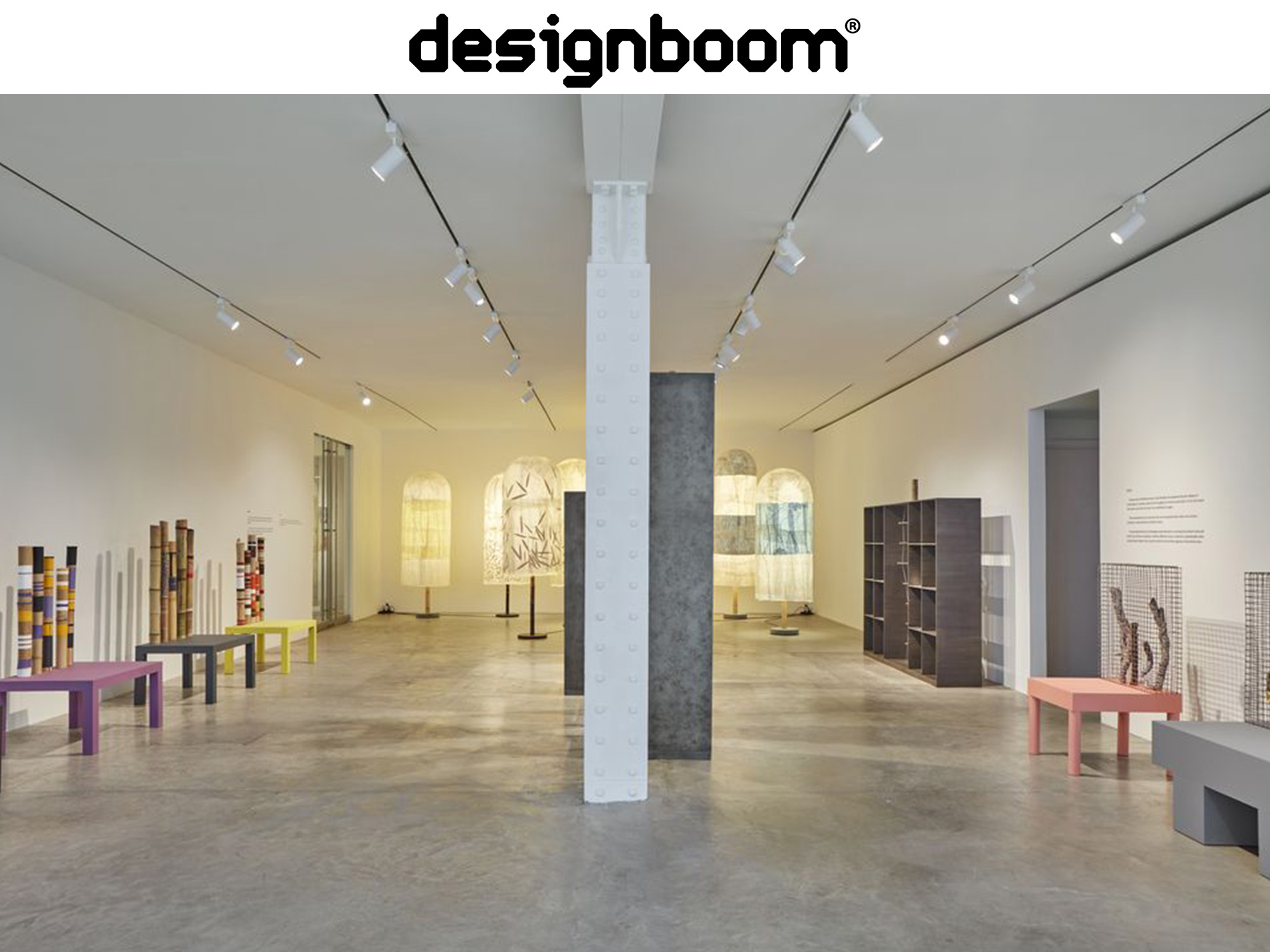By Sofia Lekka Angelopoulou
‘ANDREA BRANZI: CONTEMPORARY DNA’ AT FRIEDMAN BENDA
designboom visits Andrea Branzi’s exhibition ‘Contemporary DNA’ at Friedman Benda New York and takes in the glowing forest of his signature rice paper lamps, accented with bamboo and maple leaves. Through the exhibition, which is on view until April 22, 2023, the great luminary of Italian design and architecture reminds viewers of the innate sacredness of objects, which for him ‘is linked to the sacredness of man: they continue to live beyond the scope and time of their daily use. They have no knowledge of the night because in the night they survive, unmoving, unchanging, alive even after their own death.’
As designboom wades through ‘Contemporary DNA’, the underlying hints of his statement seamlessly appear through a series of artisanal and methodical furniture. The paper lamps emit a soft, warm glow that encourages visitors to follow a wandering path. They grow close to a line of wooden shelves and tubes of bamboo that are painted in a rhythmic kaleidoscope of colors, overlapping and synchronizing. These organic tubes contrast the stark geometries of their bases, acting as the back posts of table-like stools and completing the bamboo chair designs of Branzi.
ANDREA BRANZI UNVEILS THREE NEW BODIES OF WORK
In Contemporary DNA, which is now on view at Friedman Benda’s New York gallery space, Andrea Branzi unveils three new bodies of work: ‘Roots’, ‘Germinal Seats’, and ‘Buildings’. ‘Roots’ and ‘Germinal Seats’ are the most recent explorations of Branzi on the contradictions between commodified and natural, gestural and systematic, handmade and industrial, landscape and architecture.
‘Roots’ represents what has been abandoned and is now treasured as a relic of a bygone era, underlined by the use of sticks and driftwood. Here, Branzi cages chops of wood and bamboo in grid-formed silver wires, an allusion to one’s foundation of aesthetic values, keeping them safe and fostered for an infinite architecture of thought. In ‘Germinal Seats’, the bamboo is colorful yet precise, guiding us towards a rich and orderly world; an infinite architecture that belongs to thought.
Branzi’s objects are defined by their purpose in real life and the ways in which they recreate space that is both physical and immaterial, present and memory. The ‘Buildings’ cabinets are vessels to be filled with personal items from daily living such as dishes, books, bottles, and pots. Throughout the exhibition, the works demonstrate that urban experience is made up of the presence of micro-environments in human memory rather than pure forms of architecture.
EXPLORING POETIC DOMESTIC SPACES
Branzi has always been fascinated by human and object relations, which he explores through unconventional and poetic interpretations of domestic space. Viewing objects as living beings in the human environment has woken up Branzi’s psyche to form intricate psychological, symbolic, and lyrical associations with them. He believes that artifacts are never simply tools, but rather parts of an anthropological world, ‘a universe that is both material and ethereal, functional and unnecessary, and about which we know very little.’










